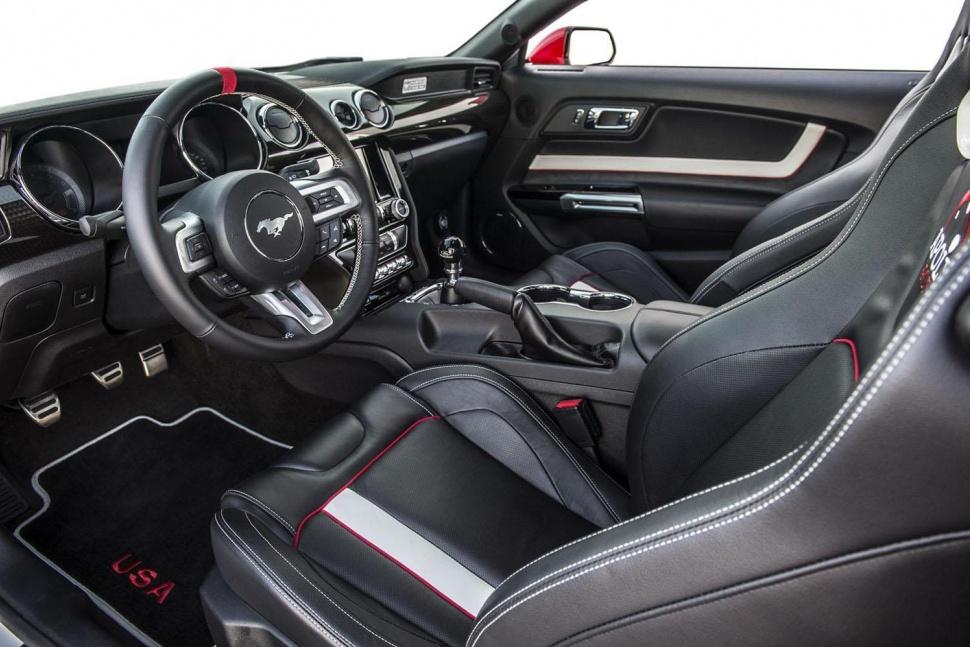We’ve covered a lot of one-off auction cars at DT before, but few have raised money for a better cause than Ford’s Apollo Edition Mustang. The muscle car — inspired by NASA’s Apollo program and built for the annual EAA AirVenture show — has sold for a whopping $230,000. Proceeds will go to the EAA’s youth aviation programs, which aim to refine the pilots, scientists, and innovators of the future.
Unlike the majority of custom Mustangs in the solar system, the Apollo Edition was (mostly) created by Ford’s own architects and engineers. Brand Design Manager Melvin Betancourt led the styling team, which crafted the car’s aggressive exterior and bespoke cabin, while the weapons-grade powertrain was modified by Ford Performance. California-based Mad Industries contributed major design input as well.
A prominent carbon-fiber splitter highlights the car’s nose, and the custom 21-inch wheels carry the black-and-white color theme down the sides. USA and Apollo livery is sprinkled throughout the interior — including the leather bucket seats — and even the LED underglow symbolizes atmospheric re-entry.
As for performance, the Mustang isn’t quite quite faster than light, but it’s closer than most. Under the hood is the same basic 5.0-liter V8 that powers the Mustang GT, but it’s been augmented by a Ford Performance supercharger and exhaust system. The result is 627 horsepower and 540 pound-feet of torque, which Ford says results in an “exhilarating, controlled launch.”
The Apollo Edition joins seven other custom ‘Stangs Ford has auctioned at EAA AirVenture over the years which together have raised approximately $3,000,000 for the EAA’s youth programs.
2014 was highlighted by the F-35 Lightning II Mustang, a car inspired by the stealth-capable and multi-role fighter of the same name. In 2010, Ford’s SR-71-themed pony car graced the AirVenture event. Equipping a Whipple supercharge and integrated roll cage, the car was an homage to the world’s fastest plane. It fetched $375,000 at auction.
Editors' Recommendations
- Ford Mustang Mach-E Rally kicks up some dirt
- Ford EV drivers can use 12,000 Tesla Superchargers starting in 2024
- Ford recalls 100,000 hybrid cars over fire risk
- 2020 Chevrolet Camaro vs. 2020 Ford Mustang
- Samsung Galaxy S21 will be a digital key for Audi, BMW, Ford, Genesis cars





